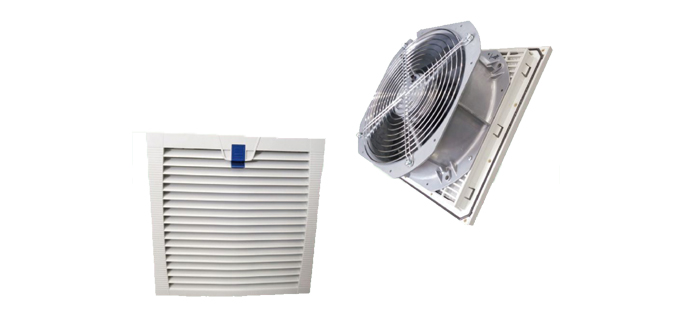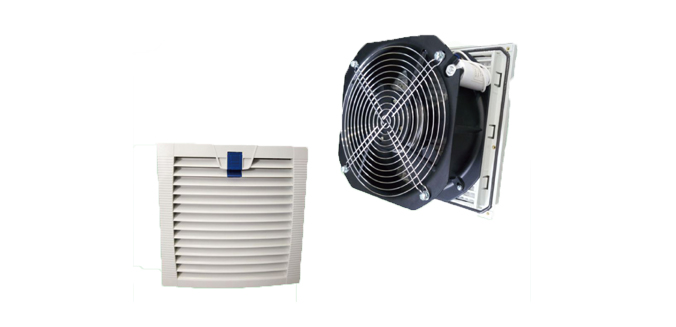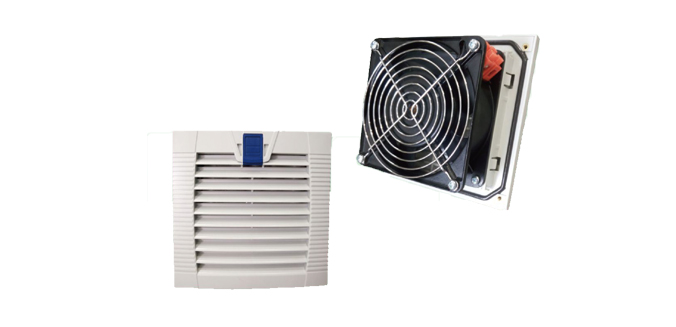Summary of Basic Knowledge of Heat Dissipating Fan
The radiator needs to accelerate the heat loss through the forced convection of the fan, so the quality of a fan plays a decisive role in the overall heat dissipation effect. Equipped with a CPU fan with excellent performance is also one of the key factors to ensure the smooth operation of the whole computer. DC Fan Running Principle: According to Ampere's Right Hand Rule, the conductor will generate magnetic field around it through current. If the conductor is placed in another fixed magnetic field, it will generate suction or repulsion, causing the object to move. A rubber magnet pre-filled with magnetism is attached to the inner part of the fan blade of the DC fan. Around the silicon steel sheet, two sets of coils are wound in the axis part. Hall induction module is used as a synchronous detection device to control a set of circuits, which make the two sets of coils winding the axis work in turn. Silicon steel sheet produces different magnetic poles, which have a repulsive force with rubber magnet. When the attraction force is greater than the static friction force of the lice fan, the leaf rotates naturally. Because the Hall induction module provides synchronous signals, the fan blade can continue to operate. As for its direction of operation, it can be determined by Fleming's right hand rule.
AC fan operation principle: AC fan and DC fan difference. The former is AC power supply, the voltage of power supply will alternate positively and negatively. Unlike DC fan power supply voltage fixed, it must rely on circuit control, so that two groups of coils work in turn to produce different magnetic fields. AC fan because of the fixed power supply frequency, so the change speed of the magnetic pole produced by silicon steel sheet is determined by the power supply frequency. The higher the frequency, the faster the magnetic field switching speed, the faster the theoretical speed will be, just like the principle of DC fan pole number, the faster the speed. However, the frequency can not be too fast, too fast will cause activation difficulties. DC fans are all used in our computer radiators. And a good fan in general mainly inspects the volume of air, speed, noise, service life, what kind of fan bearing to use, and so on.
These parameters are explained separately below.
Air volume refers to the total volume of air discharged or incorporated by the fan of an air-cooled radiator every minute. If it is calculated in cubic feet, the unit is CFM; if it is calculated in cubic meters, it is CMM. CFM (about 0.028 cubic meters per minute) is the most commonly used unit of air flow for radiator products. 50 x 50 x 10 mm CPU fan will generally reach 10 CFM, 60 x 60 x 25 mm fan can usually reach 20-30 CFM. Under the same material condition, air volume is the most important index to measure the heat dissipation capacity of air-cooled radiators. Obviously, the larger the air volume, the higher the heat dissipation capacity of the radiator. This is because the heat capacity ratio of air is certain, larger air volume, that is, more air can take more heat per unit time. Of course, under the same air volume, the heat dissipation effect is related to the flow mode of the wind. Air volume and wind pressure are two relative concepts. Generally speaking, in order to design a fan with large volume, some wind pressure must be sacrificed. If the fan can drive a large amount of air flow, but the wind pressure is small, the wind will not blow to the bottom of the radiator (which is why some fans have a high speed and a large amount of air, but the heat dissipation effect is not good). On the contrary, high wind pressure and small air volume, and insufficient cold air for heat exchange with radiators will also cause bad heat dissipation effect. Generally, the fins of aluminium fins require large enough fan pressure, while the fins of copper fins require large enough fan volume; fins with denser fins need larger fan pressure than fins with thinner fins, otherwise the air flow between fins is not smooth, and the heat dissipation effect will be greatly reduced. Therefore, different radiators, manufacturers will cooperate with the appropriate amount of wind, wind pressure fans, but not a single pursuit of large volume or high pressure fans.
The fan speed refers to the number of rotations per minute of the fan blade in rpm. The fan speed is determined by the number of turns in the coil, the working voltage, the number of fan blades, the inclination, the height, the diameter and the bearing system. There is no necessary relationship between speed and fan quality. The speed of the fan can be measured either by internal speed signals or by external ones (external measurements are made by other instruments to see how fast the fan rotates, while internal measurements can be seen directly in BIOS or by software). Internal measurements are relatively error-prone. Because with the change of ambient temperature, different speed fans are sometimes needed to meet the demand. Some manufacturers have specially designed radiators that can adjust the speed of fans. They are divided into two types: automatic and manual. Manual is mainly to allow users to use low speed in winter to achieve low noise, high speed in summer to achieve good heat dissipation effect. The automatic temperature-regulating radiator usually has a temperature-controlled inductor, which can automatically control the speed of the fan according to the current working temperature (such as the temperature of the radiator). When the temperature is high, the speed will be increased, while when the temperature is low, the speed will be reduced, so as to achieve a dynamic balance, so as to maintain an optimal combination of wind noise and heat dissipation effect.
In addition to the heat dissipation effect of fan noise, the working noise of fan is also a common concern. Fan noise is the size of noise generated by the fan when it works. It is affected by many factors, in decibels (dB). The measurement of fan noise needs to be carried out in a muffler with noise less than 17 dB, one meter away from the fan, and aligned with the fan's inlet along the direction of the fan's rotation axis. A-weighted method is used to measure the fan's inlet. The frequency spectrum characteristics of fan noise are also very important, so it is necessary to record the frequency distribution of fan noise with a spectrum analyzer. Generally, the noise of fan should be as small as possible, and it can't be used.
 About us
About us Message
Message Contact us
Contact us







